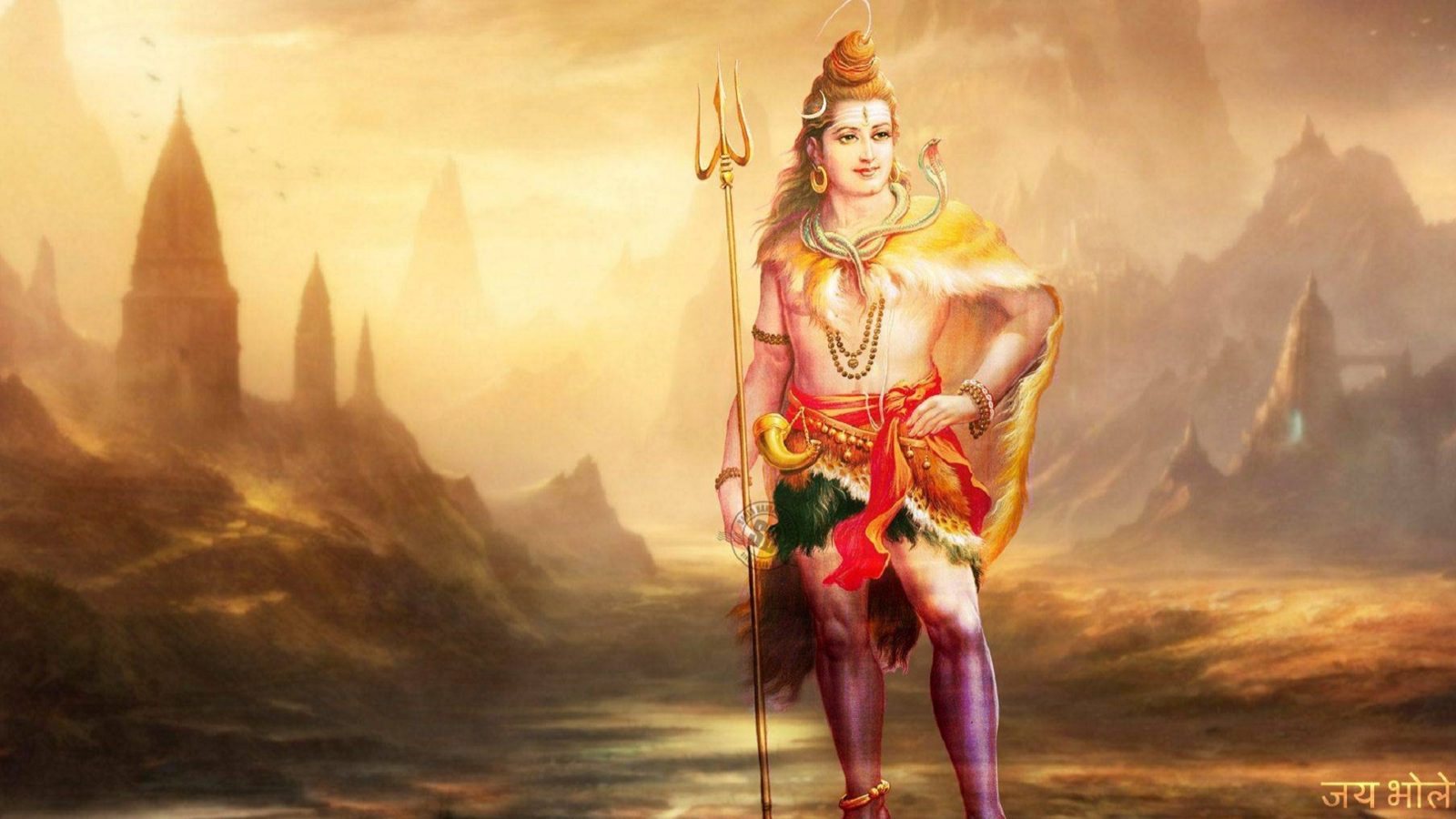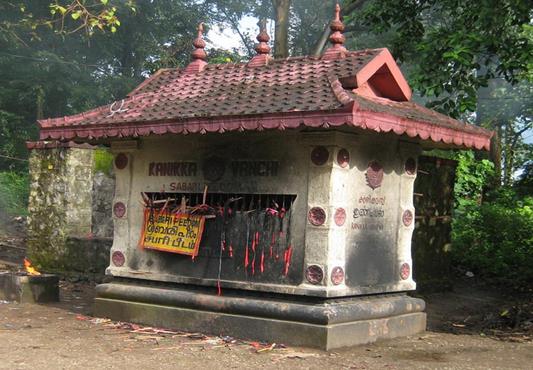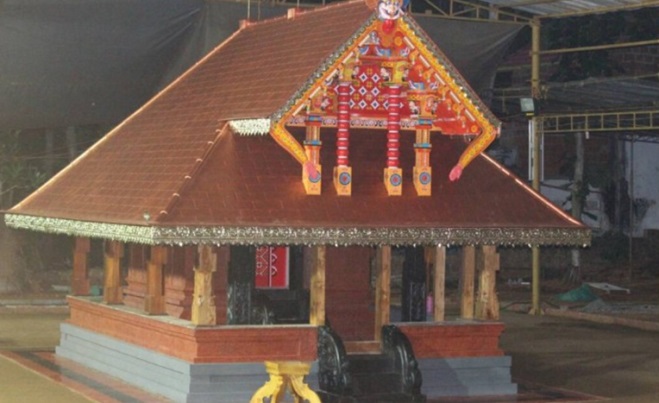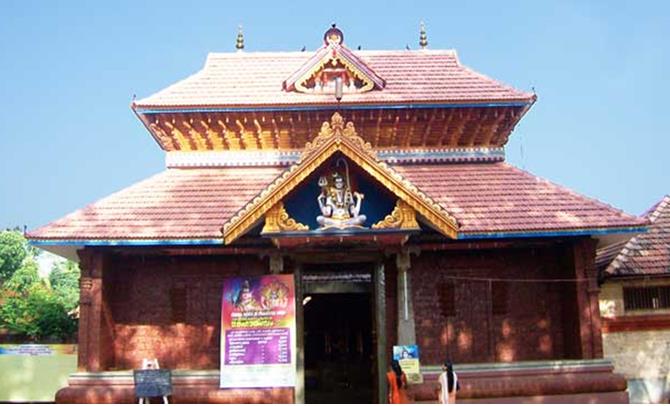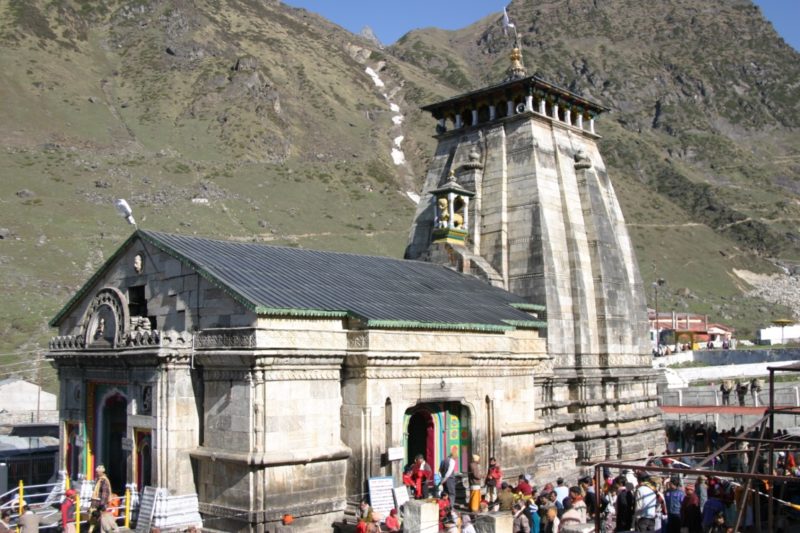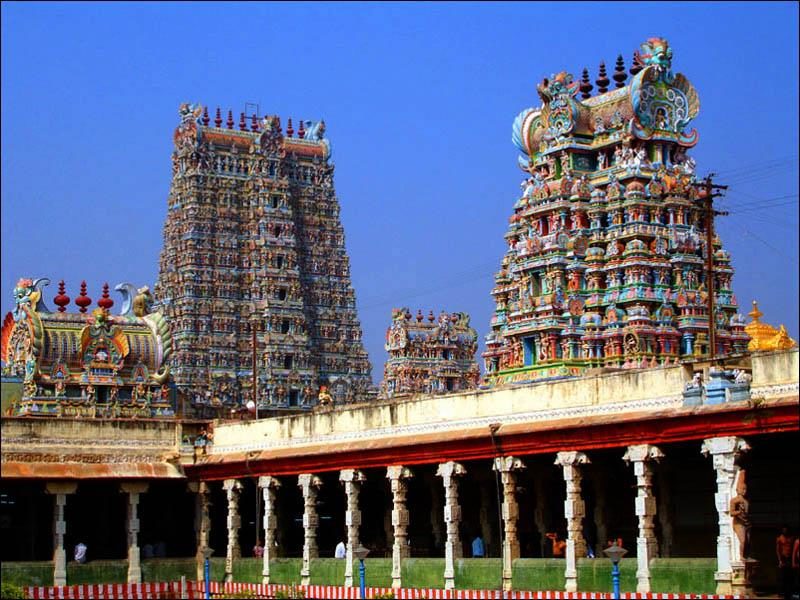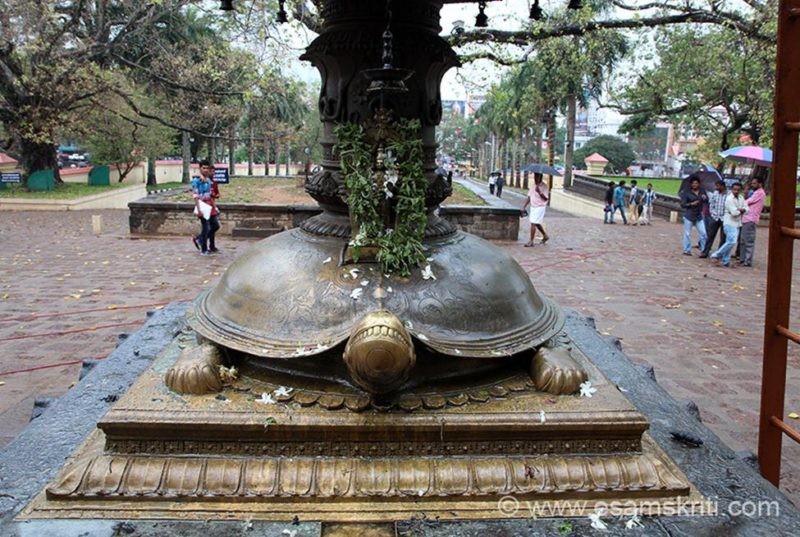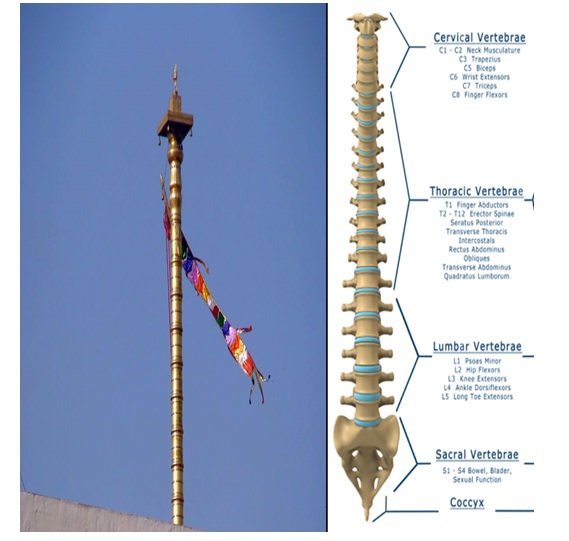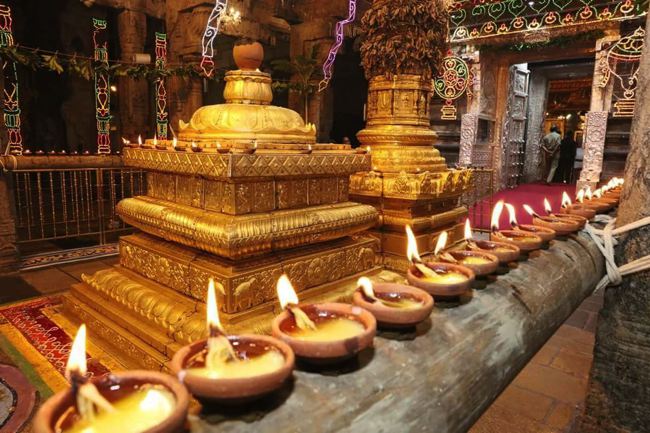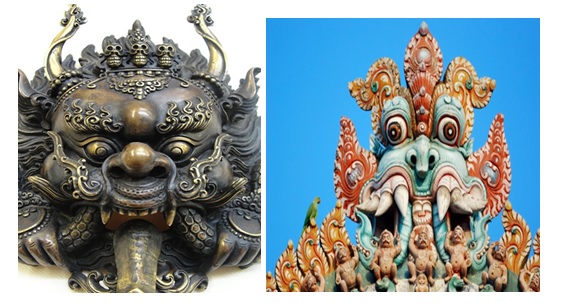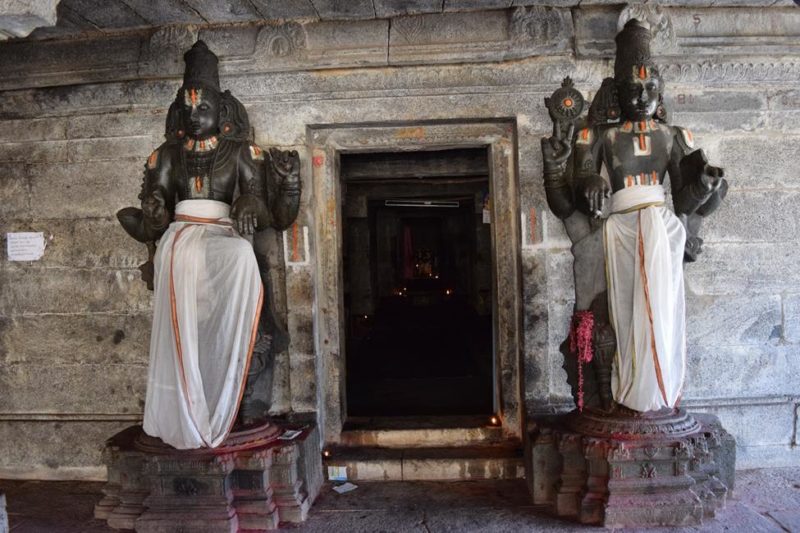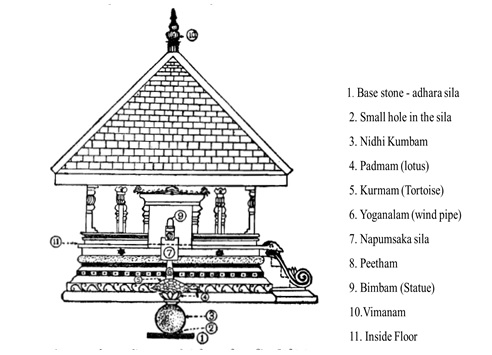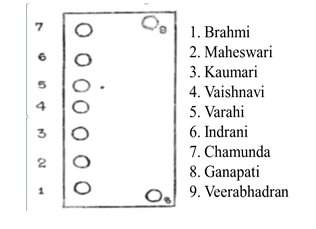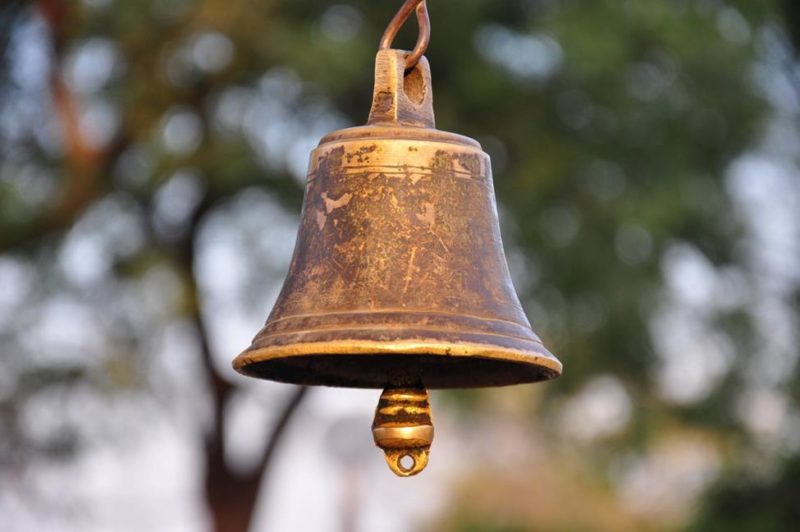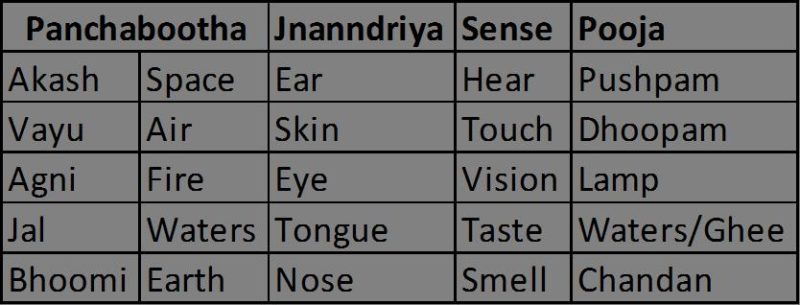No products in the cart.
“Gopura dharsanam, Koti Punyam”, means that the sight of a temple tower gives you ten million good things. Also there is a proverb in Tamil which says that don’t live in a place where there is no temple. Temples are an integral part of Hindu way of life, and with majority of population being that of Hindu in India, there are on a rough estimate more than 13 lakhs small or big temples in India. This is besides the “Pooja room” (room for offering prayers with murti or photos of deities installed) in almost all Hindu houses, a private place of worship, where prayers are offered every day.
Every village or town will have one or more temples dedicated to a particular deity and most visit that temple regularly. Though it is not mandatory to visit temples, many do offer prayers on important Hindu festival days or on any auspicious event in their own house such as a birthday and marriage.
Following are the main pilgrimage centres for Hindus in India.
- 12 Jyothir linga temples
- 5 Panchabootha linga temples
- 51 Shakti sthall
- Char Dham
- Pancharama kshetra
- Ashta Vinayaka temples
- 108 Divya Deshams
- Navagraha temples, etc
Why Do We Need Temples?
The scriptures declare that “Kshayal trayate iti kshetra”, that which protects you from injury/destruction is kshetram.
In Bhagavad Gita, Lord Krishna says that “idam sariram kaunteya ksetram ity abhidhiyate”. This body is a temple.
“Deho devalaya prokto jivah prokto sanatanah” – The Human body is like the temple and the life residing in the body is like GOD, declare the Vedas.
Swami Chaitanya Charan Das, in his book has given an excellent description about temple.
Hindu temples are not just a place for religious worship; it offers many valuable services to society. These services can be summarized in the acronym TEMPLE (Tranquillity Education Medication Purification Love Engagement).
- Tranquillity: The temple atmosphere with its soothing vibrations of holy chants and the sanctifying presence of the Deity serves as a tranquil retreat centre. It offers essential refreshing breaks that empower people to face the stresses of life.
- Education: The temple serves as a centre for higher spiritual education wherein people learn principles and practices for leading a life of moral and spiritual integrity. This education in foundational values enables people to use all their other education for socially beneficial purposes.
- Medication: The temple acts like a hospital for the mind. The medication it provides heals the diseased mentality that impels people to addiction and criminality, both of which cause an enormous drain on the national economy.
- Purification: The temple purifies the hearts of those who visit it regularly. This purification inspires talented people with leadership potential to blossom into pure-hearted, selfless, principle-cantered leaders.
- Love: The temple offers us a glimpse of the kingdom of God, where we are all together as family members in God’s family. In a vibrant temple, people learn to form relationships at the spiritual level. This leads to the experience a profound God-cantered love that provides them deep satisfaction and dramatically improves their relationships.
- Engagement: The temple provides people various satisfying engagements that preserve our national culture, and also productively channelize their talents and energies.
Who visits temple?
In Bhagavad Gita, Bhagavan Krishna declares that,
“chatur-vidha bhajante mam, janah sukritino ’rjuna
arto jijnasur artharthi, jnani cha bharatarsabha”
O Arjuna, four kinds of pious men begin to render devotional service unto me —the distressed, the inquisitive, the desirer of wealth, and the one who is searching for knowledge of the Absolute.”
- First ones are those people who are in distress. In our bad times when we are going through physical or mental agony, we generally remember & pray to God. Such people devote themselves to God because they wish to be liberated from their grief.
- Second ones are those people who want to know about the God. Such people have faith in God and want to know more about Him.
- Third ones are those people who want to gain wealth in life. There is no end to such people in this world. You can find them in temples asking God to give them wealth, money etc. However they are selfish in their life.
- Fourth ones are those people who are people of True knowledge. Such people are really the wise men. They have true knowledge to God. They are the realized sages, who have attained to the stage of reaching the supreme goal.
Types of Hindu Temples
Essentially Hindu temples are places of worship. Not meeting, prayer or congregation place. Depending upon the size, structure, deity and importance temples can be classified as
Peetham – a small structure, no murti or symbols, at times only lamp is lit. Even a banyan tree could be a peetham.
Sthanam –a family temple a small or a temple in a public place. Typically this will have no murti installed, instead will have a mirror, stone, water pot, trishul, sword, spear, etc. Yantra or salagram could also be seen.
Mandir – a small temple with murtis. Like the roadside temples or village temples. Regular pooja is also done.
Kshetram/Mahaksetram – temple built as per Agama, veda, purana or tantra rules. Deities and updevatas are installed. Regular pooja is done and anuual festivals are also conducted.
Temple Architecture and Style
Hindu Temple Architecture and styles vary from place to place depending upon many factors. Generally temples in the south India are much more grandiose than those in the North of India. This may be due to many reasons. North India is considered to be Punya Bhoomi and South India is considered to be Karma Bhoomi. Hence any temple in North is automatically considered to be divine and spiritual.
Construction of large temples needs financial support. In olden times, many of southern Kings patronized a particular deity and funded enough money and resources to construct temples that rival other kingdoms in the area. It is also seen in Western and eastern India but probably not much seen in the northern part of India. There have also been numerous attacks by Muslim rulers from Persia and Mangolia, mainly in the Northern part of India, who destroyed and looted Hindu temples regularly in the past. May be the authorities then decided not to construct large and opulent temples so that it does not attract the invaders.
Hindu Temple Visits – Rituals and Beliefs
The first step is to prepare yourself mentally and spiritually before visiting a Hindu temple. Personal hygiene is important and one must take proper bath before visiting temple. Avoid non-vegetarian meals as far as possible. Consuming alcoholic drinks and other intoxicating substances are an absolute NO. Many ancient South Indian temples have a temple tank, known as ‘kalyani’ where people in ancient times used to bath before entering.
Dress code: Short or revealing clothes are generally frowned upon and it is advisable to wear traditional, conservative clothes while visiting a temple. Some temples in south India such as Tirupati and Guruvayoor, there is a strict dress code where pants and trousers are not allowed. In certain temples in Kerala, men have to take off their shirts and enter bare-chested while women are required to wear a saree or a long dress/skirt. Leather is not permitted in some temples such as Vaishno Devi.
Footwear: Removing footwear before entering the temple premises is not just a sign of respect, but also for cleanliness and humility. As explained earlier, the temple structure is the body of the GOD and the Gopuram are the legs. Entering the Temple Gopuram (main gate) means entering the GODS physical body and that also means that we should leave the footwear outside.
Turtle Lamp – Most temples will have a large turtle lamp placed outside the temple main entrance.
Lord Krishna gives the analogy of a turtle which withdraws its limbs and head inside whenever it senses danger. This represents withdrawing our five senses such as seeing, hearing, tasting, smelling and touching that pursues sensual objects of mundane pleasure and looking only inside before entering the temple premises. Such a person is defined as “sthithaprajna” by Lord Krishna and Gita.
Dwajastambam – very close to the turtle lamp is the Dwajastambam, the flag post. Dwajastambam in temples are the places where you should prostrate before entering temples.
This has many significance and explanations and some of them are given below.
- Dwajastambam gives an idea to a devotee from a long distance about the murti installed in the temple, as generally the idol of the ‘vahana’ (vehicle) of the GOD is installed on top of the post.
- In most cases, the top portion of the flag staff will have three horizontal perches or three branches pointing towards the Sanctum. It symbolizes righteousness, reputation and propriety or the Trimurtis – Vishnu, Brahma and Shiva.
- It can be noticed that the top of the Dwajastambam is the highest point of the temple, and thus, whenever lightning would strike, the temple would be saved from the devastating damage that could have been caused.
- Dwajastambam is normally placed vertically in line with the main deity of the temple.
- Dwajastambam also symbolizes the spine or Back-Bone of the temple deity. (Please observe the construction of the Dwajastambam and one can observe that it has many vertebras.)It represents Sushumna and starts from Muladhara and ends at Sahasrara padmam. If the Dwajastambam is kept horizontally, it should extend up to the sreekovil(sanctum sanctorum)or up to the namaskara mandapam.
- In many south Indian Christian churches also one can see an exact replica of such Dwajastambam though placed slightly away from the line of altar.
Bali peetam – This represents a miniature replica of the main temple. Except for the Head, which is the Garbagriham (sanctum sanctorum), all other parts of the temple are reflected here.
The word Bali means sacrifice. Seeveli or Sree Boothabali is done every day and the main priest offers prayers and offers naivendyam to the balipeetam. During this time the assistant poojari will be carrying the utsavamurti or the chalabimba of the main deity on his head symbolizing that the main poojari is offering the prayers on behalf of the god. If the temple is considered as the body of the god, this is the feeding process.
Symbolic meaning is suggested by numerous scholars but several scholars are also of view that the animals were sacrificed as a practice at the Bali Peetham. According to agama sastra, when we enter in to the temple we should surrender / sacrifice our ego and bad thoughts in front of the Bali peetam and enter in to the temple with pure mind. Devotees should bundle their ego and ill feelings, enter with pure mind, sacrifice all bad thoughts and ill feelings if at all they have any at the Bali peetam, surrender totally to the Almighty, and then enter the temple with the mind filled with pure thoughts of the supreme Lord. In the end before leaving the temple, Devotees should do namaskaram/prostrate in front of the dwajhasthambam and Bali peetam with total humility and true devotion
Kirti Mukha – Temple Architecture and Symbolism
Very often the deity is framed by a doorway like formation with a monster’s head over the top. This is a common feature of many of doorways to the old houses, temples and palaces in India and South East Asia. This is called a kirti-mukha which literally means “the face-of-glory” and it represents the principle of all-consuming Time. Since Time is the greatest destroyer and takes from us all that is precious and separates us from our loved ones and objects it is shown as being wrathful and terrifying. It serves to remind the contemplator that everything is conditioned by time and space and all things in the universe including the deity depicted are all subjected to appearance and disappearance. Everything is impermanent and subject to constant change.
Always remember that the wealth, health, beauty, youthfulness and any other attributes that you are proud of will be gone with time and Kirti Mukha represents that time. Bow your head in respect of this truth and eliminate any ego that you have before entering the temple.
Namaskara Mandapam – is the small raised square platform built right in front of the sanctum sanctorum in most south Indian temples. This represents the Ajna chakra and the throat of the deity. The main priest offers daily poojas sitting in this Mandapam. Others are not supposed to sit or keep their feet on this sacred space.
Dwarapalakas – When you enter a temple in South India, the gates to the inner sanctum sanctorum are guarded by two rather frightening individuals, the dwarapalakas. They are required to guard access to the resident deity and keep all but the most important from disturbing their rest. Dwarapalakas are two sentinels whose jobs are to stand at the entrance and keep watch. One should get the permission mentally from Dwarapalakas, before entering the temple. If their names are known, one should spell the name and say ‘Namonamah’ one by one. The names depend on the Agama Sastra which is followed. The dwarapalakas at Vishnu’s temples have had an especially interesting history. The story goes:
Brahma had four sons, Sanaka, Sanatana, Sanandana and Sanatkumara, who embodied all the goodness and knowledge in the world. The devas came to them and said,” O sons of Brahma, why don’t you go to earth and teach all you know to the human race? They will greatly benefit from it.” The four Brahma putras refused to do so. But upon the devas pleading with them, they decided to go to Vishnu and get his counsel. As they were about to enter Vishnu’s abode, the dwarapalakas, Jaya and Vijaya, blocked their entry. “You may not enter,” said one of the dwarapalakas. “Our lord is sleeping.” “O, dwarapalakas do not block our way. We have something important to discuss with Lord Vishnu.” said the four brothers. At that the dwarapalakas said, “We bow to no one and listen to no one other than Vishnu. You may not enter to see him now.” The Brahma putras got very angry and cursed the dwarapalakas saying they would be born as mortals. At this point, Vishnu intervened and said,” Please forgive them. They were only carrying out my commands and did not know who they were talking to.”
Sanaka, then said, “The dwarapalakas can choose two ways to live out their curse. Either they will be born as rakshasas thrice and lead short lives or they can be born as humans and lead very long lives on earth.” The two dwarapalakas choose to be born as rakshasas and lead short lives. Vishnu also blesses them saying, “I will deliver you from your mortal bodies. During each birth as a rakshasa, you both will die only at my hands and can then resume your rightful place as my guardians.”
Thus, the dwarapalakas are born as the rakshasa brothers Hiranyaksha and Hiranyakashipu and are slain by Vishnu in the varaha and Narasimha avatars. They then are born as Ravana and Kumbhakarna. In the Ramayana, They are the only two demons who die at the hands of Rama himself, another avatar of Lord Vishnu. Finally, the dwarapalakas are born as Shishupala and Dantavaktra, part of the few who are directly killed by Krishna. And so the the guards receive moksha at the hands of Vishnu and return to guard the doors to Vishnu’s abode once more.
Archaka (Priest) should get permission from Dwarapalaka while opening the respective gate. Bali (prasada neivadyam) should be offered to Dwarapalakas along with other parivara devatas after main deities. Arghyam, Padyam, Achamanam, etc. are also to be done to Dwarapalakas.
Sanctum Sanctorum: The innermost part of the temple where the murti of the deity resides is called the sanctum sanctorum. This is considered the most sacred part of the temple and except priests; no one is allowed to enter here.
Temple construction and the installation of the main deity are an elaborate and scientific process and do not fall within the scope of this article. However it is important to understand that the Thantri (main priest) who consecrates the murti during installation must be a realised soul with raised kundalini power who transfers part of his spiritual power to the deity. Subsequently the power of the deity is increased by daily prayers, Poojas and other rituals. The sthula sarira of the temple is represented by the sleeping figure of a person with the Gopuram being the feet and Sanctum Sanctorum the head. Similarly the Sushma sarira is represented by the image of the sitting person.
Darshanam – After taking permission from the Dwarapalakas, finally you view the main deity of the temple and concentrate your mind and body into that one divine entity. In most busy temples one may get less than 5 seconds to stand in front of the deity and pray and should take full use of that time by surrendering fully and totally to the GOD almighty both mentally and physically. Though it is OK to keep your eyes either open or close, it is better to keep the eyes fully open in those temples where you get only very limited time so that it becomes easy for you to remember and recall the image easily subsequently.
Pradakshina (circumambulation) – After the darshanam we go around the temple in the clockwise direction. The Lord is the centre, source and essence of our lives. Recognizing Him as the focal point in our lives, we go about doing our daily chores. This is the significance of Pradakshina. As we do Pradakshina, the Lord is always on our right. In India the right side symbolizes auspiciousness. So as we circumambulate the sanctum sanctorum we remind ourselves to lead an auspicious life of righteousness, with the Lord who is the indispensable source of help and strength, as our guide – the “right hand”.
How many times one should do the Pradakshina?
Typically the following guidelines are given.
- Ganapati – 1,
- Surya – 2,
- Vishnu/Devi – 4,
- Banyan Tree – 7
- Siva – only 3/4th
Pradakshina can be done in the Inner prakaram, outer prakaram, outer wall and around the village the temple is situated and the benefits multiply based on the area covered, more outside than inside.
While doing the Pradakshina, we are supposed to concentrate our mind on the deity and recite Nama mantra constantly. Even if you meet your long lost friend or relative, there should be no discussions or chats, all such activities are to be done only after leaving the temple. One should walk like a fully pregnant women walking with a pot full of oil on her head without spilling it.
Pradakshina – Inside first, if you want bhautika life, outside first if you want to pursue spiritual life.
Digpalakas and Saptamatrukas – Around the temples one can find many small stones installed and they are called dikpalakas and saptamatrukas. One should always walk outside the dikpalakas and saptamatruka and do not touch them as they are part of the sushmasarira of the Lord.
Saptamatrukas are generally installed on the southern side of the sanctum sanctorum. Digpalakas are installed around the temple as follows.
Aṣṭa-Dikpāla (“Guardians of Eight Directions”)
- Kubera (North)
- Yama (South)
- Indra (East)
- Varuṇa (West)
- Īśāna (Northeast)
- Agni (Southeast)
- Vayu (Northwest)
- Nirṛti (Southwest)
Temple bells
In temples, bells are hung in front of the Garbhagriha. Generally, in North Indian temples devotees ring the bell while entering the temple. However such practices are rarely seen in south Indian temples. It is said that by ringing the
bell, the devotee informs the deity of his/her arrival. The sound of the bell is considered auspicious which welcomes Gods and removes evil. The sound of the bell is said to disengage mind from ongoing thoughts thus making the mind more receptive. Bell ringing during prayer is said to help in controlling the ever wandering mind and focusing on the deity.
Panchopachara Pooja – Offering Gandham (sandal wood paste), Pushpam (flowers), Deepam (lamp), Doopam (intense sticks) and naivedyam (food) to the lord is called Panchopachara Pooja and is the simplest way of doing a Pooja.
After the Pradakshina you receive the prasadam from the priest. Please remember that the things you receive in the temple have been touched by the Lord and therefore is part of the Lord. You must receive these with utmost reverence and discipline.
Theertham –keep the thumb between index and middle finger, then our right palm should be placed in our left palm and receive the theertham in your right hand. Theertham must be taken without making any sound and drink without touching the palm by the lips. If done so it is counted as a dosha equivalent to drinking blood. Drink it at the base of the palm without touching it with lips. The balance of the theertham could be poured on your head.
Puspam – smell it and keep it in your ear. Pushpam represents akasham (space) and therefore sound, hence it is kept in your ear. Smelling it is to inhale the essence of divinity and energise your body and mind.
Deepam – When the sacred flame is brought around, generally it is burning with camphor, with palms facing down, reaches out both hands gently over the flame and then touch the hands to one’s eyes. Deepam represents fire and therefore seeing, hence the hand after keeping above the deepam is kept on your eyes.
Gandam – Chandan – receive it in your right hand and apply it with your ring finger between the eyebrows and remaining chandan can be applied on your shoulders, chest, etc. Never rub the remaining chandan in any walls inside the temple as from the Temple Gopuram till around the outer wall represents part of the GOD’s physical body.
Bhasmam/Kumkum – pick it up with thumb, Middle and ring finger and apply as explained for chandan in your forehead only. .
Prasadam/naivedyam – eat it outside the temple.
Other etiquette: It is always good to sit for few minutes inside the temple once your prayers are over. While sitting, the feet should not point toward any of the Deities and should be silent with your mind focused on GOD and chanting his names. Displays of affection such as hugging are also not considered appropriate in the temple premises.
Temple Offerings
Generally we give many offerings to the temple. This could be flowers, fruits, coconut, oil, etc. or money or gold items to be deposited in the hundi. In many temples there are also lists of vazhipad that can be done. Why do we offer these to the God? Typically many do this for getting positive results for the prayers they are making to the Lord. A kind of bribe, either before the fulfillment or after. But the GOD is not an agent or middle man to get us what we want. The actual meaning of these offerings is different. When you offer part of your karmaphala (results of your efforts), you are offering part of yourselves to the LORD. Anything that is offered to the Lord becomes part of the Lord, means part of you has also become part of Lord. In fact one must offer whatever one has to the Lord and symbolically offer a small part of it by way of donation or vazhipadu.
Benefits of Temple Visit
Many of us visit temple either as a routine practice because you get peace of mind while visiting or many of us go there with a prayer to the GOD to take care of certain things in our life, such as health, wealth, marital or other problems, passing in exams or winning court cases, etc. Many of us also make GOD our partner in business and offer His share of profit every year, which is very common in Tirupati Balaji temple. In essence, many experience positive benefits after visiting temple. How does this happen? Does GOD solve your problems?? What is the significance of going to temples?
The answer is a clear NO. If that is the case, why do we get benefits after praying to the GOD? The truth is, GOD makes us capable of solving our own problems by giving us that extra energy and positivity necessary for success.
Once the deity is energised during installation by a realised soul and the temple priest enhances the energy by every day Pooja, the divine power starts resonating at certain frequency. If your mind resonates at the same frequency, GOD’s energy enhances yours and makes you stronger by the principles of resonance and transfer of energy.
However if your mind is disturbed and resonates at a different frequency than that of the GOD’s, you may end up getting NO results and in extreme cases even negative results depending upon your mental state while visiting the temple.
That is why in many Hindu temples ladies during menstruation are not permitted to visit. Because during menstruation, due to hormonal changes, ladies go through intense mood swings that can include anything from mild to moderate depression, anxiety, melancholia, sensitivity, even full-blown anger and self-hatred. If you visit temples during such disturbed state of mind, you may end up getting severe negative efforts due to GODs reverberating energy is totally out of sync with yours. (You may check in the internet with the experiment of resonance with tuning fork for explanation).

